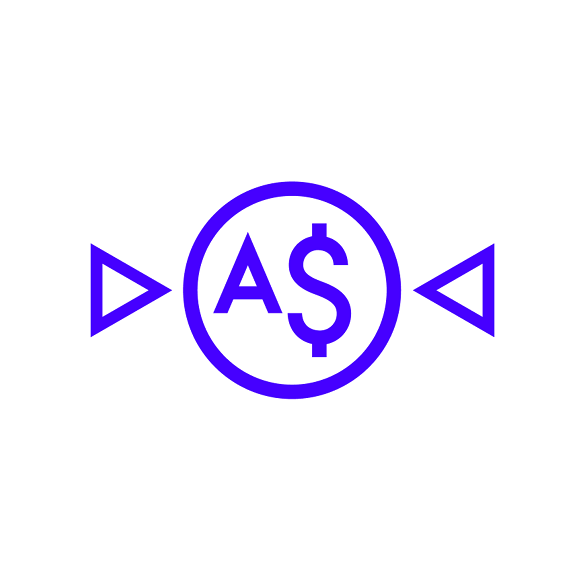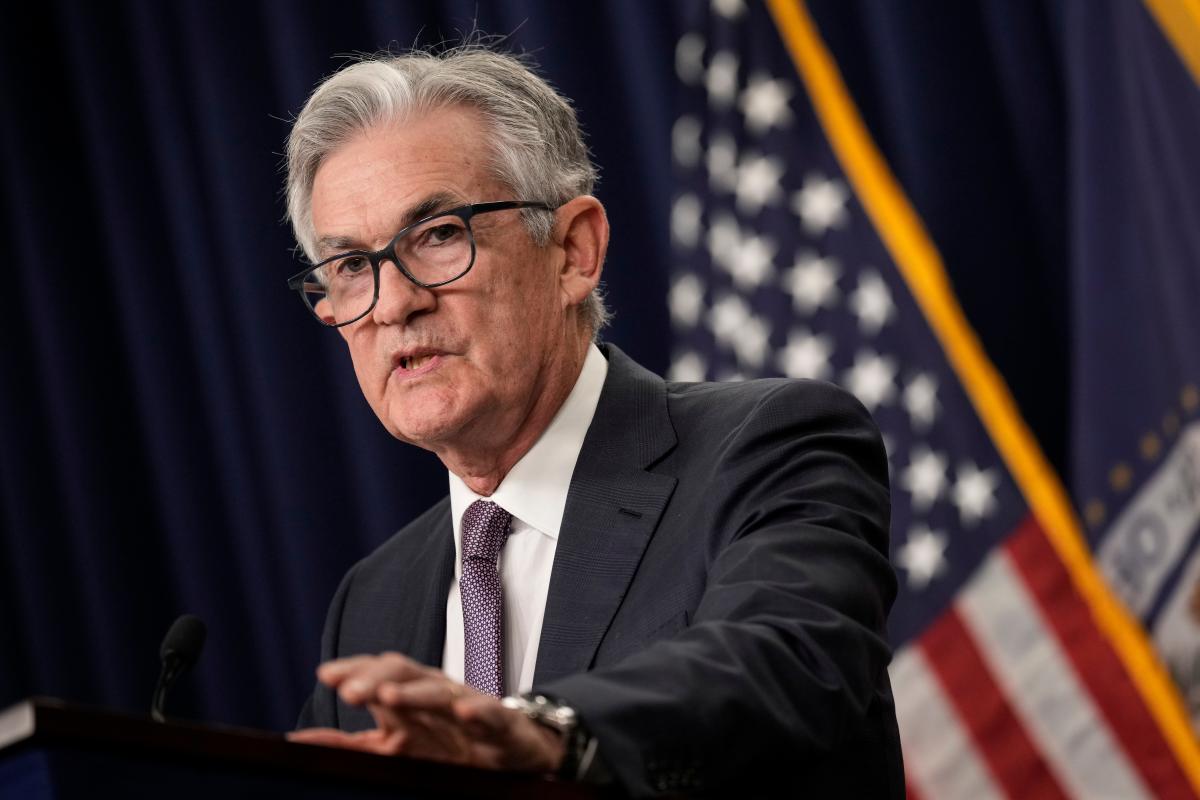WASHINGTON – The Federal Reserve is going slower but aiming higher.
The Fed raised its key short-term interest rate by half a percentage point Wednesday, dialing back from recent outsize hikes as it draws up an end game in its aggressive campaign to tame soaring inflation.
But the central bank forecast another three-quarter point in rate increases next year, more than it previously estimated. Fed officials are thus signaling they believe inflation is still too high and aren’t backing off their hard-nosed battle to subdue it despite growing recession risks.
In a statement after a two-day meeting, the Fed reiterated that “ongoing (rate) increases…will be appropriate” to bring down yearly inflation to the Fed’s 2% goal. Some economists reckoned the Fed instead would say “additional increases” would be needed, signaling the Fed is close to winding down the hiking cycle.
At a news conference, Fed Chair Jerome Powell said recent reports showing inflation easing in October and November were “welcome.”
“The report is very much what we expected and hoped for,” he said.
But he added, “It will take substantially more evidence to provide confidence that inflation is on a sustained downward path.” He said the Fed is looking for several such reports that reveal steadily easing price gains.
How much did the Fed raise interest rates today?
The Fed’s latest move follows four straight three-quarter point increases and takes the federal funds rate – which is what banks charge each other for overnight loans — to a range of 4.25% to 4.5%, a restrictive level intended to slow economic growth.
The hike is expected to ripple through the economy, driving up rates for credit cards, home equity lines of credit, adjustable rate mortgages and other loans. But Americans, especially seniors, are finally benefitting from higher bank savings yields after years of paltry returns.
Since the benchmark rate hovered near zero in March, the Fed has hoisted it by more than 4 points, the fastest pace since the early 1980s.
How high will Fed interest rates go?
The Fed now expects the rate to end 2023 at a range of 5% to 5.25%, higher than the 4.5% to 4.75% it projected in September, according to policymakers’ median forecast. It estimates it will cut the rate to 4.1% by the end of 2024 to support an economy likely to be weakened by the rate increases, above the 3.9% it predicted in September.
Most economists forecast a mild recession next year, according to those surveyed this month by Wolters Kluwer Blue Chip Economic Indicators.
Economists aren’t convinced the Fed will need to raise rates as much as it’s projecting.
“We think a slowing economy and progress on inflation will allow the Fed to stop short of that forecast,” economist Nancy Vanden Houten of Oxford Economics wrote in a note to clients.
On Wednesday, the Fed said it expects the economy to grow 0.5% this year, more than previously estimated, and at the same feeble pace in 2023, below its September forecast of 1.2%, according to officials’ median estimate.
It predicts the 3.7% unemployment rate will rise to 4.6% by the end of next year, above the 4.4% it previously projected.
Will inflation go down by 2023?
And the Fed’s preferred measure of annual inflation is expected to decline from 6% in October to 5.6% by the end of the year and 3.1% by the end of 2023, above earlier projections of 5.4% and 2.8%, respectively. That would mark a notable decline but would still be well above the Fed’s 2% target.
The broad strokes of the Fed’s decision Wednesday have been telegraphed for weeks. Since early November, Powell has said officials were likely to slow the pace of the rate increases as early as this month to assess their effects but arrive at a “somewhat” higher peak rate in 2023 than previously planned. He cited inflation that remained “much too high.”
More recently, though, Fed officials have had to weigh conflicting signals. A report Tuesday showed consumer prices rose 7.1% annually in November, down sharply from 7.7% the previous month and a 40-year high of 9.1% in June. That’s the second straight significant pullback of inflation as measured by the Consumer Price Index (CPI).
Ian Shepherdson, chief economist of Pantheon Macroeconomics, predicted the inflation report would lead the Fed to forecast just one more quarter point rate increase early next year before pausing as recession risks loom larger.
Is the job market still hot?
But Powell said that while goods inflation has cooled as supply snarls have improved, the price of services such as health care, education and restaurant visits have shown little sign of easing. Powell pointed to persistent worker shortages that have spawned sharp wage increases in service industries. He noted that most of the baby boomers who retired early during the pandemic are unlikely to return to the workforce.
“The labor market continues to be out of balance, with demand substantially exceeding the supply of available workers,” Powell said. “We still have a ways to go” before the demand for workers wanes, moderating price increases for services. “We may have to raise rates higher to get where we want to go.”
Employers added a healthy 263,000 jobs in November and average annual wage increases picked up to a vibrant 5.1% from 4.7% the prior month.
“Job gains have been robust in recent months, and the unemployment rate has remained low,” the Fed said in its statement Wednesday.
Higher labor costs typically prompt companies to raise prices to maintain profits.
Another reason for the Fed’s tough stance on rates is that it has been locked in a sort of tug-of-war with financial markets. The last two CPI reports boosted stock markets and pushed down long-term interest rates, bolstering the economy, partly on hopes they would mean fewer rate hikes.
But a better economy likely would keep inflation higher for longer, forcing the Fed to raise rates more sharply. Part of the Fed’s goal Wednesday is to head off a favorable market reaction by forecasting that rates will rise further than officials projected in September, research firm Barclays says.
How will mortgage rates react to Fed hike?
Mortgage rates, which have already been declining since about mid-November, could dip further, some economists say.
“The housing market has certainly welcomed the recent decline in mortgage rates. This decline is reflecting market expectations of being near the peak for short-term rates, as well as increased signs that the U.S. is headed for a recession next year,” said Mike Fratantoni, Mortgage Banker Association chief economist. “Weaker growth typically leads to lower long-term interest rates, including mortgage rates.”
He forecasts mortgage rates for 30-year fixed-rate loans, which were at 6.4% last week, to drift down and end 2023 around 5.2%.
“Housing and mortgage markets benefit from both a strong economy, which supports growing household incomes, and also lower inflation, which translates to lower mortgage rates,” he said.
What is summary of economic projections (SEP)?
The Fed’s Summary of Economic Projections (SEP) is released four times each year and includes FOMC participants’ projections for gross domestic product (GDP) growth, the unemployment rate, inflation, and the appropriate policy interest rate.
The summary also provides information regarding policymakers’ views on the uncertainty and risks to their outlook.
The SEP offers numerical values to key metrics for the current year and the subsequent two years as well as over the longer run.
What did the latest SEP show?
Fed funds rate: In 2023, the Fed expects to continue raising the fed funds rate. Its median forecast is for the rate to rise to 5.1%, up from its 4.6% forecast the last time it released its projections in September. In 2024, its median forecast is for the rate to drop to 4.1% and then further to 3.1% in 2025.
Inflation: Based on the personal consumption expenditures (PCE) price index, the Fed’s preferred inflation gauge, the median forecast is for inflation to fall to 3.1% next year. The median inflation forecast slips further to 2.5% in 2024 and 2.1% in 2025. The Fed’s longer-run target is 2%.
All of the current predictions are above the Fed’s projections from September when its median inflation forecast for 2023 was 2.8%, 2.3% for 2024 and 2% in 2025.
Gross domestic product (GDP): Real, or inflation-adjusted, GDP is expected to be 0.5% this year and next but pick up to 1.6% in 2024 and 1.8% in 2025. Its median forecast for this year was revised up from 0.2% economic growth in September, but the rest are downgrades. Its median forecasts for economic growth were 1.2% in 2023, 1.7% in 2024 and 1.8% in 2025.
Unemployment: With expectations for the economy to slow, the Fed sees a rise in unemployment. Its median forecast for the jobless rate is 4.6% in 2023 and 2024, up from 3.7% this year. In 2025, the unemployment rate is expected to tick down marginally to 4.5%. The Fed’s median projections in September for the unemployment rate were 3.8% this year, and 4.4% in both 2023 and 2024, and a touch lower in 2025 at 4.3%.
Recession? Even though the Fed doesn’t anticipate a recession, defined generally as two consecutive quarters of negative economic growth, “The expected increase in the unemployment rate between this year and next has never happened without the economy falling into a recession,” Ryan Sweet, Oxford Economics chief U.S. economist, noted.
How high will the Fed raise interest rates?
No one knows for sure how high the Fed will raise rates before it hits the pause button. JPMorgan Chase CEO Jamie Dimon said last week he thinks the Fed will stop once rates hit 5%.
–Elisabeth Buchwald
Why does the Fed raise interest rates?
When an economy is booming and inflation is rising, the Fed will often raise interest rates to slow down everything. Higher rates make borrowing more expensive, which should make businesses and consumers think twice about spending. Slower spending should cool down the economy and inflation.
–Medora Lee
How it works: Why does the Fed raise interest rates? And how do those hikes slow inflation?
Stocks aren’t a guide: Despite stock rally, recession in 2023 is still likely as Fed continues to raise rates
How will rate hikes affect me?
The cost of holding debt with a variable interest rate is going increase.
That means rates on credit cards, new mortgages and auto loans will all rise. Those who already have a fixed mortgage rate for their home loan won’t see any difference in their payments.
On the other side, savers will get a little more for their deposits as those interest rates will also rise.
–Medora Lee
Fed meeting schedule 2023
After today’s meeting, the central bank will reconvene on January 31 for its two-day meeting. Here is a look at the fed meeting calendar for the rest of 2023:
-
March 21-22
-
May 2-3
-
June 13-14
-
July 25-26
-
September 19-20
-
October 31-November 1
-
December 12-13
— Elisabeth Buchwald
What should we expect Powell to say?
Powell is expected to reiterate that inflation remains much too high (at 7.1% in November), and that the Fed has more work to do, meaning more rate increases are likely.
“Since inflation continues to remain elevated and recession risks are becoming clearer, we expect Chair Powell to provide a hawkish press conference to rein in equity prices and push back on the rate cuts priced in for late 2023, ” said Gargi Chaudhuri, head of iShares Investment Strategy. A hawk is someone who’s very concerned about inflation and wants to fight it aggressively.
Chaudhuri expects the effort now to slow inflation to the Fed’s preferred rate of 2% to be the hardest to achieve because most of the inflation now is in service components like rent and housing prices, which tend to take a longer time to ease.
–Medora Lee
Strong labor market: November jobs report: Unemployment rate held steady at 3.7% with 263,000 jobs added
What does the rate hike mean?
A rate hike is really an increase in the Fed’s short-term benchmark fed funds rate, or the target range for the rate at which commercial banks borrow and lend their excess reserves to each other overnight.
Consumer rates tend to track the fed funds rate in a ripple effect. If the federal funds rate is rising, banks might pass on additional interest costs in the form of higher interest rates on consumer and other borrowing, but also increase the rates they pay their depositors.
That means the cost of debt servicing will rise for both consumers and businesses, and savers should see a small boost in the interest rate for their deposits.
–Medora Lee
Beware of high costs: Beware of store credit cards this holiday. Here’s why they may end up costing you more.
Gloomy: Consumers are feeling less cheerful ahead of the holidays. What this may mean for spending
How did the stock market react to the Fed rate hike?
Major stock indexes closed lower after the Fed raised its benchmark fed funds rate by 50 basis points, as expected. It also boosted its 2023 median forecast for the rate to 5.1% from 4.6% in its September projection as it raised its personal consumption expenditures (PCE) price index forecast to 3.1%, from 2.8% in its last forecast.
The median projection for the unemployment rate next year is now 4.6%, up from 4.4% when the Fed last issued its forecasts.
The broad, benchmark S&P 500 ended down 24.33 points, or 0.61%, at 3,995.32; Dow Jones Industrial Average fell 142.29 points, or 0.42%, at 33,966.35, and the Nasdaq-100 down 85.93 points, or 0.76%, at 11,170.89.
—Medora Lee
What about the 10-year treasury?
Thirty-year fixed-rate mortgages trace movements in the 10-year Treasury note and are affected by the Fed’s key short-term rate only indirectly. On Wednesday, yields on the 10-year slipped to 3.479% after the Fed’s announcement. Bond yields move inversely to bond prices.
–Medora Lee
When will the Fed pivot and cut rates?
According to the Fed’s economic projections, that won’t come until 2024.
It sees more interest rate hikes next year, with the median fed funds rate forecast at 5.1%, up from 4.6% in its last projections in September.
In 2024, though, that median forecast for the fed funds rate drops by 100 basis points to 4.1%, suggesting 2024 will be the year for rate cuts.
Further easing is expected in 2025 to bring the fed funds rate down to 3.1%, the Fed’s median projections show.
–Medora Lee
What dates did the Fed raise rates in 2022?
Here’s when the Federal Reserve hiked its short-term interest rate this year, and the amount by which it raised that rate.
-
March 17: 0.25 percentage point
-
May 5: 0.50 percentage point
-
June 16: 0.75 percentage point
-
July 28: 0.75 percentage point
-
September 22: 0.75 percentage point
-
November 2: 0.75 percentage point
—Elisabeth Buchwald
What are current mortgage rates?
The average 30-year fixed mortgage rate, as of Dec. 13, was 6.33%, down from a peak of 7.08% earlier this year, according to Freddie Mac.
Mortgage rates have been falling the past few weeks on signs inflation has peaked and the Fed may pause raising rates and pivot to lowering rates next year.
Priced out: What’s happening with the housing market? Mortgage rates, home prices and affordability
More pain ahead: Housing market has ‘further to fall’ as buyers walk away and sellers scramble for profit
What is discount rate?
Discount rate is the interest rate the Fed charges to commercial banks and other depository institutions on loans from their regional Federal Reserve Bank’s lending facility, or discount window.
These loans give banks and other institutions ready access to money and support the smooth flow of credit to households and businesses.
What is prime rate?
Prime rate, currently at 7%, is the interest rate a bank charges for loans to their very best customers with the top credit scores. It’s often used as a reference rate (or base rate) for many types of loans, including loans to small businesses and credit card loans.
Although the Federal Reserve doesn’t set the prime rate, many banks choose to set their prime rates based partly on the federal funds rate, which is set by the Fed. That means it’s likely to rise when the Fed raises rates on Wednesday.
The Fed reports the prime rate posted by the majority of the largest twenty-five banks on its website.
–Medora Lee
Who runs the Federal Reserve?
The three main Federal Reserve entities are: The Federal Reserve Board of Governors, the Federal Reserve Banks, and the Federal Open Market Committee (FOMC).
The Chair (currently Jerome Powell) and the Vice Chair of the Board (now Lael Brainard), as well as the Vice Chair for Supervision (currently Michael Barr), are nominated by the President from among the members and are confirmed by the Senate. They serve a term of four years in these roles.
-
Each of the 12 Federal Reserve banks is separately incorporated and has a nine-member board of directors. The boards oversee their bank’s administration and governance, budget and overall performance, audit process, and broad strategic goals and directions.
Each bank has a president who serves a five-year term, oversees day-to-day operations and serves, in rotation, as a voting member of the FOMC, or policy making committee. The FOMC determines, among other things, interest rates.
-
The FOMC consists of 12 voting members – the seven members of the Board of Governors; the president of the Federal Reserve Bank of New York; and 4 of the remaining 11 Reserve Bank presidents, who serve one-year terms on a rotating basis. All 12 of the Reserve Bank presidents attend FOMC meetings and participate in FOMC discussions, but only the presidents who are FOMC members at the time may vote on policy decisions.
— Medora Lee
What’s a Fed pivot?
A Fed pivot is when the Fed reverses its current policy.
In this case, since the Fed is in an interest rate hiking cycle, it would mean the Fed would start lowering rates. That’s not expected to happen any time soon, but investors are keen to sleuth out clues as to when that could happen. Some economists think this could happen in the second half of 2023 while others say not until 2024.
— Medora Lee
Will CD rates and other interest-rate savings accounts rise with Fed hike?
For savers, the rising interest rates mean deposit rates are reaching highs not seen in more than a decade, and they’re likely to continue climbing as the central bank continues to hike.
“However, future rate gains may be limited to savings accounts and short-term CDs,” or certificates of deposit, said Ken Tumin, a senior industry analyst at Lending Tree and founder of DepositAccounts.com. “Long-term CD rate gains have slowed and in a few cases, rates have declined in a way that has been similar to long-dated Treasury yield declines.”
— Medora Lee
How many federal reserve banks are there?
There are 12 Federal Reserve Banks, with a total of 24 branches nationwide. These banks serve as the “operating arms” of the Federal Reserve System.
Each bank operates in its own geographical region of the country and collects data on the businesses and needs of the communities it serves. That data is then used to help craft the monetary policy dictated by the Federal Reserve.
— Medora Lee
What should we expect the Fed to do and say today about rates?
Economists expect the Fed to raise its short-term benchmark fed funds rate by a half percentage point, which would be a step down from its 0.75-percentage point increase at each of the last four policy meetings.
In addition to the Fed’s policy statement announcing the rate move, the Fed’s releasing its summary of economic projections this month. In it, economists expect to see the Fed boost its forecast for how high it sees the fed funds rate next year. Most economists expect the Fed to raise its median forecast for the fed funds rate to around 5% from 4.6% in September, the last time it released its projections.
— Medora Lee
Strong spending: $11.3 billion in holiday shopping: Cyber Monday spending breaks all-time record, per report
When does Fed announce the next rate hike?
The Fed’s decision is announced at 2 p.m. ET on Wednesday.
— Elisabeth Buchwald
What time does Powell speak today?
Fed Chairman Jerome Powell’s media conference will begin at 2:30 p.m. ET on Wednesday. USA TODAY economics reporter Paul Davidson will cover the event in person.
— Elisabeth Buchwald
Painful hope: Federal Reserve’s rate hikes hurt Americans. But it’s our only hope against inflation.
Wages and inflation: Good news is wages are rising. Unfortunately, that may also be bad news. Here’s why.
What is the current federal funds rate?
The current federal funds rate, the interest rate banks charge to lend to one another, is between 3.75% to 4%. In effect, it’s closer to 3.83%, according to an analysis by the New York Federal Reserve.
—Elisabeth Buchwald
Elisabeth Buchwald is a personal finance and markets correspondent for USA TODAY. You can follow her on Twitter @BuchElisabeth and sign up for our Daily Money newsletter here.
Medora Lee is a money, markets, and personal finance reporter at USA TODAY. You can reach her at [email protected].
Paul Davidson is economics correspondent for USA TODAY.
This article originally appeared on USA TODAY: Live updates: Fed ups interest rate by 50 bps; Powell speech analysis







































